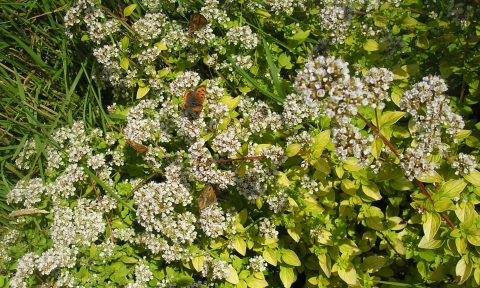Herbs have grown in wild places for millennia, often thriving where other plants struggle to get a foothold. There is surely a herb for every home in Cornwall (windowsills and doorsteps included). Where herbs flower, wildlife thrives.
This blog showcases a few staple herbs that enhance my own Cornish garden. They are a tonic and a joy, whether you are self-isolating during the coronavirus pandemic, returning home from a tough day’s work or (for queen bumblebees too) bringing up a young family.
What exactly is a herb?
The botanists among us consider a herbaceous plant to be one that grows stems and foliage, flowers and seeds, and then dies back to the ground each year. What a joyous moment when new clumps of vibrant, fresh leaves emerge from the warming earth to herald a new growing season!
More widely, we think of herbs as scented, flavoured plants (some of which do have woody stems) for use in medicine, flavouring food and drink, dyeing cloth, freshening the air, repelling certain troublesome insects … the list goes on. Today, garden herbs play a major role in saving wildlife.
How to grow herbs
Many herbs grow better on poor, stony ground rather than waterlogged soil (see mints below for exceptions), so increase drainage and aeration in your garden soil, pot or container (any container will do – even cut-out food or drink cartons with drainage holes in the bottom). Break up clay clumps and add whatever you have to hand – horticultural sand, grit, compost – to avoid sogginess. Sift the soil as if you are making a fruit cake. Good news: herbs grow better without expensive artificial fertilizers.
Mints prefer a richer, wetter soil than thymes, sages and lavenders, which thrive in a Mediterranean-type situation (think of the warm, dry temperate zone at the Eden Project). However, you might want to grow them in a container anyway, unless you are happy with them wandering and spreading across the garden.


